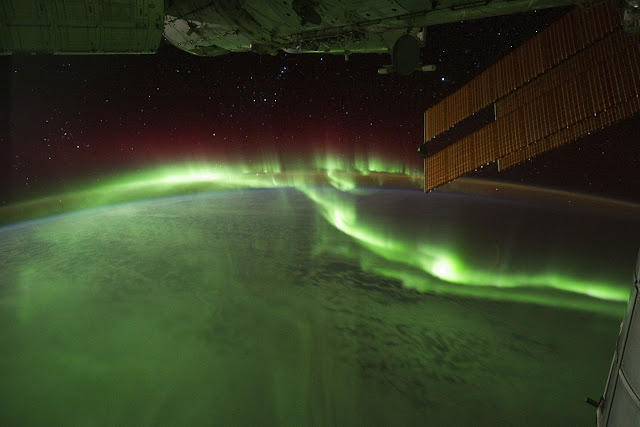Sometimes both heaven and Earth erupt. Colorful aurorae erupted unexpectedly earlier October 2012, with green aurora appearing near the horizon and brilliant bands of red aurora blooming high overhead. A bright Moon lit the foreground of this picturesque scene, while familiar stars could be seen far in the distance. With planning, the careful astrophotographer shot this image mosaic in the field of White Dome Geyser in Yellowstone National Park in the western USA. Sure enough, just after midnight, White Dome erupted -- spraying a stream of water and vapor many meters into the air. Geyser water is heated to steam by scalding magma several kilometers below, and rises through rock cracks to the surface. About half of all known geysers occur in Yellowstone National Park. Although the geomagnetic storm that created these aurorae has since subsided, eruptions of White Dome Geyser continue about every 30 minutes.
Image Credit & Copyright: Robert Howell
Explanation from: http://apod.nasa.gov/apod/ap121017.html






